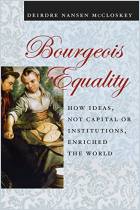
Read or listen offline
автоматическое преобразование текста в аудио
1×
автоматическое преобразование текста в аудио
Recommendation
The term “creative destruction” describes the sometimes painful shift of capital, labor and assets to higher levels of dynamism and productivity. This reallocation across an economy augurs stronger long-run growth and increasingly vibrant activity, particularly if new companies displace legacy firms. Some blame sluggish US growth since 2006 on a lack of creative destruction. But economists Chang-Tai Hsieh and Peter J. Klenow disagree. Their technically complex report on the ebb and flow of an economy will interest researchers and analysts.
Take-Aways
About the Authors
Chang-Tai Hsieh is an economics professor at the University of Chicago Booth School of Business. Peter J. Klenow is a professor of economic policy at Stanford University.
Learners who read this summary also read
Book
Report
Book
Book
Book















Comment on this summary or Начать обсуждение